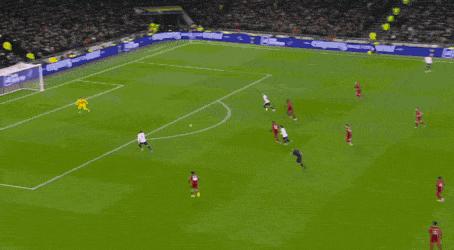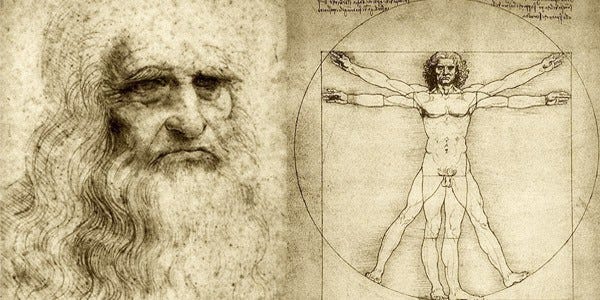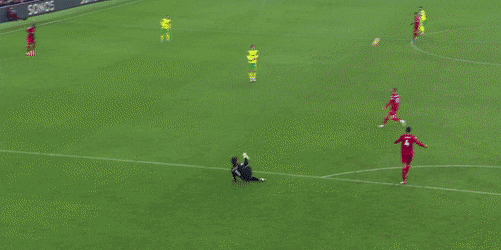Player of the Season Alisson as the 'prolific' keeper
Alisson's contribution was the goalkeeping equivalent of a prolific striker, preventing 17 goals more than he should have. The Player of the Season made an impossible role look casual over 38 games.
The end of the season awards are always the subject of much debate. This season has been no different.
Mohamed Salah put up ridiculous numbers in the first half of the 21/22 season and would’ve broken every record had he maintained that standard.
Kevin De Bruyne’s season was hindered initially by injuries and a COVID infection before exploding into life, as he helped carry Manchester City to their 4th Premier League in 5 years as the league’s best player during that period.
Bernardo Silva contrarily carried Manchester City’s title hopes primarily, during the first half of the season, in De Bruyne’s absence, yet it wasn’t any of these three worthy contenders who took my top spot.
Across the entire season one man stood alone as the best player, in terms of consistency, influence and performance week in week out, when considering their role and its difficulty. For contributions across the entire season, I cannot place a single player as better in 2021/22.
Alisson Becker, undoubtedly sits as my Player of the Season.
The prolific keeper:
The Liverpool keeper, in his anomalous, stat-defying, alien campaign, was more harshly done by a second place finish than any of his teammates. Alisson’s direct tally of goals prevented were the equivalent, in effect, to having a wildly prolific striker in your side.
In supporting my empirical assertion with real data, John Harrison’s keeping model calculates Alisson to have prevented 17.57 goals in the league; 0 of the 17.57 goals prevented coming from penalty prevention given Liverpool as a club didn’t concede one all season.


On the opposite end of the field, only Son Heung-min (23) and Mohamed Salah (18) scored more non-penalty goals, exemplifying Alisson’s contribution as one of the league’s most influential game-changers.
For a keeper playing in a ball-dominant side, rather than a lower-table box-defending side, Alisson’s contribution this season stood out as being almost miraculous, almost always.
Momentum, momentum:
Liverpool’s defensive record reads as impressive, conceding the joint fewest across the 38 games season alongside Manchester City. However it was a semi-common occurrence to see an opposition striker bursting through towards the Brazilian’s goal, uncontested. Alisson faced 54 1v1s, with only Leeds’ Illan Meslier facing more (66).


With anyone but Alisson in goal, Liverpool would’ve certainly drifted further from the eventual one-point gap at season’s end and Alisson’s repeated saves acted as momentum shifters — actions that would on many an occasion be followed be a Liverpool goal in the ensuing few minutes.
A few examples come to mind immediately, the first being his save against Arsenal in the 51st minute. After a Thiago back pass found Lacazette alone in the Liverpool box, with only the keeper to beat, Alisson bore down on him, his starting position outside of his own six yard box.
The immediate pressure of Becker prohibited Lacazette from getting a strike away. Instead, Lacazette cleverly found Odegaard with a backheel. Scrambling in his box, whilst somehow maintaining a consistent control of his domain, Alisson managed to get back and make an otherworldly save against the Norwegian, in a game in which the opponent were playing well.
The game at this point was finely poised, the 51st minute and still goalless.
Arsenal had developed a reputation of being formidable box defenders, with their closer Rob Holding and their infamous back 5 tweak once going in front. If either the Lacazette receive or the Odegaard strike had hit the back of the net, Liverpool under the pressure of the looming title charge and the challenge of cracking open Mikel Arteta’s safe may have left the Emirates empty handed.
Script Writing Players:
That, however, did not happen. Of course not. In the neutral game state of 0-0, Alisson would not put his team mates or manager in the treacherous position of having to play through an unfamiliar, uncomfortable game state.
Instead no more than 2 minutes later, Jota had squeezed the ball in at the near post in an attempt that should’ve been saved by Aaron Ramsdale.
Momentum shifter.
Liverpool a goal up, a positive game state. The opposition now has to play, to commit if they want even a point, and Liverpool with their lightning transition game pick you apart there or through their usual method of suffocation. Alisson facilitated that.
The knock-on effect of conceding a goal on even 15% of those occasions, would’ve brought Liverpool into an equal or losing game-state, a taxing and alternative challenge that would’ve seen them drop points more often.
As a ball-dominant side, the continuous pressure you enact works to break down opposition sides. The longer you can sustain pressure, without permitting the opposition to get out, to breathe, the more likely you are to score, dominate and win.
Alisson ensured this predator-prey state was present for most of the season. Liverpool rarely had to fight from behind and Liverpool very rarely had to attempt to score against teams that had a goal advantage. Alisson was the most influential for the second best side in the league, whilst being more consistent than any of his Player of the Season competitors. And when attempting to compare players across different positions to pick out the single best, it is integral to consider their given role and the difficulty of it.
The metric by which I judge players is to evaluate how well a player does their prescribed role week in, week out whilst considering how difficult that role may be.
Two centre-backs both performing at an 8/10 standard all season would not rank equally for me if centre-back A was in the middle of a back 5 behind a compact midfield 3 and centre-back B was playing on the touchline as a high-line, ball-playing defender.
Difficulty of role matters, as does the ability to do multiple roles. It is the most impressive when a player has many strings to their bow, can play difficult pieces, and receives the audience’s standing ovation after every symphony, each week.
But De Gea has better stats!
Many of the data machines of the footballing world place Jose Sa’s impressive over-performance relative to the expected amount of goals he should’ve conceded as the best the league has to offer. Football pundits and fans alike have argued in favour of David De Gea too, as the best player for United or the best keeper the league had last season, a take I vehemently disagree with, my opinion being closer to the exact opposite of the aforementioned statement.
Although both Jose Sa, David De Gea (and Nick Pope) topped the increasingly popular advanced keeping stat (PSxG +/-), neither were more impressive than the Brazillian keeper.
(PSxG +/-, which is a horrendous acronym by the way, stands for post-shot expected goals minus goals allowed. This essentially tallies, according to their model, the difference between the quality of shots faced and the amount of goals conceded. The higher the value, the better. The quality of shots are determined by their placement, down the middle is bad, in the corners is good.
A higher PSxG +/- value would, in theory, suggest a keeper had faced many high quality shots whilst conceding far fewer than the amount of goals one would expect from those same shots.)
To the fan one step above casual, there’s been an inclination to place either of these two keepers ahead of Alisson, leaving Alisson as not only not the best player in the league this season, but not even the best keeper. But as is or should be true for all advanced statistics, they must be verified with the ever-trusty (depending on your judgment) eye-test.
The Stats are a lie…
David De Gea’s PSxG prevented (I still hate this acronym) sits at 6.7 and Jose Sa’s value snatches the gold medal with 9.2. Alisson accepts the 4th place according to the data here on raw shot-stopping with a value of 4.1.
The gap between Sa and Alisson seems undeniable but by understanding the model and appreciating the game with our trusty eyes, it becomes easier to understand why Alisson’s season was more impressive than the strong Jose Sa season.
It is key to keep in mind that PSxG only compares shot-stopping and using this alone is flawed when comparing keepers (@ De Gea fans) as there are many parts to being a modern keeper that are vital to the team’s success.

Comparing the value of post-shot expected goals faced — or in other words, the amount of goals a keeper should’ve conceded after considering the placement of those shots, David de Gea faced 60.7 should’ve-been goals, the second most of any keeper in the league, whilst Jose Sa faced 48.2, the eighth most.
Alisson, in comparison, faced 27.1, the second least of keepers playing more than half the season.
It is important to appreciate the main reason Alisson’s shot stopping numbers here are reduced with that reason simply being the fewer amount of total chances Liverpool conceded.
Relative to his competitors however, after correcting by sample size, his numbers line up nicely amongst those above him.
De Gea prevented a goal for every 9.06 (post-shot) expected goals faced, Alisson prevented a goal for every 6.61 expected goals faced and Jose Sa prevented a goal for every 5.24 expected goals faced.
Extrapolating this data, we can say that if that level of shot-stopping was maintained and those three keepers faced an expected 100 goals worth of shots, De Gea would’ve prevented an additional 11.04 goals, Alisson would’ve prevented 15.13, and Jose Sa would’ve prevented 19.08.
Umir’s Interlude:
At this point, it would be easy to close the chapter and sleep easy knowing Jose Sa was in fact, Player of the Season. Umir was wrong. Congratulations.
But we have to go deeper.
I don’t always have the liberty to write so on such occasion it has to be comprehensive, and it is often to the point it becomes excessive.
Following this brief interlude, there begins a short explanation as to why the shot-stopping models of PSxG, although an improvement on comparing clean sheets, are ultimately flawed.
Advanced Stats are Advanced, but less so than eyes:
We left off at the half-conclusion of:
De Gea preventing one goal per 9.06 (post-shot) xG, Alisson preventing one per 6.61 (post-shot) xG faced and Sa one per every 5.24 (post-shot) xG faced.
Now all three are admittedly great shot-stoppers, but even with these numbers, a proposal can be made that would adequately explain Alisson’s shot-stopping superiority, despite the data.
The PSxG model although interesting and relatively useful, remains partly flawed as a metric to go solely off. A shot in the top corner ranks high in the post-shot xG model but the model fails to consider shot velocity. A shot that may be placed in a ‘more difficult location’ may in fact, be easier to save than a shot placed rather centrally, if the speed or power of the shot was reduced, if the shot was from distance, if the shot was taken under the pressure of multiple surrounding defenders, or if the goalkeeper was in a non-central position.
Alisson’s main shot-stopping strength came in the form of 1v1s, which I hold as the most difficult of all of the shot-stopping scenarios.
The placement of the shot in a 1v1 situation is important of course, but given the time, separation, increased shooting angles, lack of defensive pressure, and greater area of the goal to target — the attacker has a far more favourable situation in which to shoot from.
In that situation, not finding the top corner is still more likely to result in a goal than if a forward facing Wolves took a slower shot bound for the corner, whilst under pressure. The saves against Tottenham in the away fixture highlight this point perfectly.

When comparing the 1v1 shot-stopping of both keepers, Alisson outperformed Jose Sa by 5.04 expected goals saved. This comparison is statistically rather accurate too given Alisson and Sa faced 54 and 53 1v1s respectively. The sample size of 1v1s faced ended up essentially identical as Alisson prevented 5 additional goals.
Earlier, Alisson’s total (post-shot) xG faced was highlighted as being the second fewest for all Premier League starting goalkeepers. It was also highlighted that Allison (54) faced the second most 1v1s of any Premier League keeper last year, with only Meslier (66) facing more.
Given this disparity, it is acceptable to conclude that a rather significant proportion of Alisson’s xG conceded were in the fiery pits of the 1v1 duels, more so than any other keeper.
Given the context of these shots conceded and the shortcomings of the PSxG model, it would be difficult to argue against Alisson as the best, in terms of shot-stopping alone.
Even if you wanted to persist in the belief that Sa was better than Alisson in that subsection of keeping, there are the numerous parts of goalkeeping outside of shot-stopping that we haven’t touched upon.
The Renaissance Man:
Alisson performed the role of keeper, from a raw shot-stopping perspective, amongst the best, vastly over performing compared to what a typical keeper would be expected to and this was made even more impressive by the fact many of the shots he faced were 1v1 situations with minimal support.
That, in itself, is absolutely ridiculous and I implore you to take a moment to ponder upon that fact.
The high line of Liverpool, that enabled them to essentially field 10 players in the opposition half, was a gung-ho system that only worked as well as it did given the human forcefield in their half saved 15% of the 1v1s he should’ve conceded.
Alisson, as the prolific Renaissance man, enabled Liverpool to play this imposing front-footed possession system too, through his wondrous sweeping ability and his competence in possession.
If we split goalkeeping into three domains: shot-stopping (through which we have already established Alisson’s dominance), shot-prevention (to include sweeping and high claims, and a proactive press a la on Lacazette in the earlier example), and possession, we begin to understand the completeness at which the Brazillian operated last season.
As we consider role, completeness and difficultly, Alisson achieved something only Bernardo Silva and his ability across the entire field could stand up to.
In terms of shot prevention, Alisson managed to prevent an addition 2.67 goals through his proactive through ball sweeping. No keeper amassed more defensive contributions outside of their penalty area than Alisson’s 63 and his bearish dominance and speedy closing down of ongoing attackers too, prevented shots being taken at all (see: Norwich, away).

When comparing his completeness here, to a statistical ‘competitor’, Alisson runs away forming an uncontested gap in quality. Alisson prevented 2.88 goals through his ready claiming of crosses, making 22 high claims to De Gea’s 8, whilst facing 111 fewer crosses.
Alisson’s 30 sweeper clearances also dwarf De Gea’s 7, allowing us to place two more ticks in the checklist of everything a keeper could do.
And lastly, to excel in a ball dominant side, and be comfortable playing and creating in the first phase as a keeper is a paramount trait for the globe’s best sides.
Alisson graciously accepts second place in this regard to Ederson, which is an achievement not to be ashamed of. Alisson has on occasion been subject to a mistake when playing out from the back, in high pressure situations against a strong team press. These are sporadic lapses though — the vast majority of his on-ball contributions being safe, smart and progressive.
With a net positive contribution of 1.34 goals coming from his ability in possession, Alisson’s ability to remain assured and find his central defenders all through to his attackers (evident in his non-zero assist tally this season) simply rounds off the ultimate keeping arsenal.
Concluding this short novella (or letter of admiration), Alisson’s 21/22 season displays a quality of keeping I have not seen since Neuer’s ascendency.
In all honesty, I would be surprised if these anomalous numbers were maintained into next season. Although an over performance is likely, this level of over-performance probably regresses towards the mean. From a logical, mathematical perspective, and from the perspective of my rival eyes, it doesn’t make sense for a keeper to perform so far above the level of the normal keeper as well as above his own previous seasons in this way.
Yet even if Alisson does ‘regress’, he’ll very likely still remain as the league’s best, which is a testament to the season just gone. If he doesn’t regress, he’ll likely go down as one of, if not, the greatest to play his position.
Alisson was the most consistent of the names mentioned alongside him. Liverpool’s keeper contributed directly, to 17 or so goals (prevented) and indirectly to his side’s dominance by ensuring a neutral or winning game state was maintained often and in pivotal moments, as he played the hardest role a keeper could have — an unprotected, ball-playing, sweeper facing numerous 1v1s.
This is a campaign that, in future years, may be lost as the honours used to readily judge players ended up in other hands. No Premier League title. No Golden Glove. No Player of the Season. No Player of the Month.
Instead, those that sat down, week in, week out to watch the Liverpool games of 2021/22 will have to carry the duty of spreading the message of one such brilliant campaign…the campaign of the league’s best, the prolific keeper: Alisson Becker.
(Thanks to John Harrison’s data which supported many of my visual observations. xGOT and PSxG I’mma let you finish but John Harrison’s goalkeeping model was (is) one of the greatest of all time).











